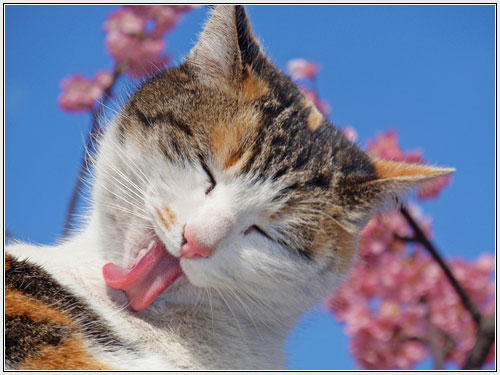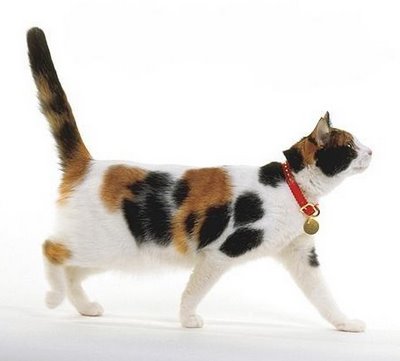Cats are well known for constantly keeping up with their daily routine of grooming their face and paws. However, there are other areas they can not reach that require a tidy cleaning as well. Unfortunately, while most people recognize a dog’s need to be groomed, often the cat is overlooked.
There are many important reasons for grooming your cat. Brushing your cat is a prime opportunity to check for fleas and ticks. A regular grooming can also be an essential asset for catching thus problem before it becomes an all out infestation. Another reason to brush and comb your cat is that this process helps remove dirt and debris he may not have been able to reach himself. There are many irritants and other items you don’t want resting on your cat’s skin as well as other debris you would not want him to ingest.
The last reason grooming is such an essential part of your cats care, is that it removes loose hairs from his coat. These loose hairs can end up inside a cat’s stomach and are not always easily digested. Hair that is not digested becomes what is known as a Hairball. On occasion, your cat may be able to cough it up, but more often, these matted, mucus hairballs become lodged in the intestinal tract, creating very serious problems.
Contrary to what most people might think, cats actually enjoy being groomed. To make this process easier, introducing your cat when he is a kitten to brushes and combs will make the experience much more comfortable for you and your cat.
To brush your cat properly, start by gently running the brush or comb through your cat’s fur following the grain. Always start with the back of the neck and work your way down to the tail. If you are first starting with a kitten, and he starts to become irritated, stop brushing. Use a soothing, calming voice as you play and pet him. This will help get the kitten back into a more agreeable and relaxed state to continue the grooming process. Always remember, never to use a comb or a brush near the cats face or eyes. They do not like this and it can prevent them from being comfortable the next time you try brushing him.
In an instance where a cat does not enjoy being brushed with a brush or comb, there is another alternative. A useful tool called a grooming glove is a great way to make your cat think he is only receiving a relaxing and luxurious massage, when in fact this glove is gently removing loose hair, dirt and debris from his coat. You may also find that cats do not mind having their faces groomed with the gentle glove as well. However, some cats still won’t allow you to groom their paws.
Another important part of the grooming process, besides brushing is examining your cat’s eyes and ears. The eyes should be clear and free of debris. If debris is found in the corners, a damp, warm, soft cloth can gently remove it. The ears should be clean and reflect a pink healthy hue. If you find that your cat’s ears contain, blackish colored dirt, this may be a sign of ear mites. These mites can cause the ears to be tender and over time will begin to shrivel the ears causing your cat to lose his hearing. If you believe your cat has ear mites, it is best to visit a veterinarian. He can prescribe medicine that should clear it up if caught in time.
The next step in giving your cat a healthy grooming is to check his claws if they have not been removed. A pair of special pet nail clippers will help you remove the long curved tip, although be careful not to cut to far back and nick the quick. This is the part of the nail that contains blood vessels and when cut, will bleed and be very painful for your cat. Trimming your cat’s nails will not only prevent them from catching on things and potentially breaking off, but it will also protect you and your possessions from scratch damage.
Teeth are another very important thing to remember when grooming your cat. As cats age, they are highly prone to dental problems which can cause severe illness. A fingertip toothbrush and some specially flavored pet toothpaste worked gently over your cat’s teeth, once a week is essential in preventing any future dental problems.
Lastly, you should try to implement a grooming schedule for your cat once a week. Anyone who owns a long haired cat may want to brush him twice a week as they are prone to becoming matted. If matting and gnarled hair has occurred, the best answer is to have your cat shaved. This must be done in a veterinarian’s office as cats do not like the sound of the clippers and must be put under sedation. This can be a truly traumatic experience for your cat, so a regular grooming routine at home will keep your cat happy and healthy while also keeping his coat clean, smooth and tangle free.
There are many important reasons for grooming your cat. Brushing your cat is a prime opportunity to check for fleas and ticks. A regular grooming can also be an essential asset for catching thus problem before it becomes an all out infestation. Another reason to brush and comb your cat is that this process helps remove dirt and debris he may not have been able to reach himself. There are many irritants and other items you don’t want resting on your cat’s skin as well as other debris you would not want him to ingest.
The last reason grooming is such an essential part of your cats care, is that it removes loose hairs from his coat. These loose hairs can end up inside a cat’s stomach and are not always easily digested. Hair that is not digested becomes what is known as a Hairball. On occasion, your cat may be able to cough it up, but more often, these matted, mucus hairballs become lodged in the intestinal tract, creating very serious problems.
Contrary to what most people might think, cats actually enjoy being groomed. To make this process easier, introducing your cat when he is a kitten to brushes and combs will make the experience much more comfortable for you and your cat.
To brush your cat properly, start by gently running the brush or comb through your cat’s fur following the grain. Always start with the back of the neck and work your way down to the tail. If you are first starting with a kitten, and he starts to become irritated, stop brushing. Use a soothing, calming voice as you play and pet him. This will help get the kitten back into a more agreeable and relaxed state to continue the grooming process. Always remember, never to use a comb or a brush near the cats face or eyes. They do not like this and it can prevent them from being comfortable the next time you try brushing him.
In an instance where a cat does not enjoy being brushed with a brush or comb, there is another alternative. A useful tool called a grooming glove is a great way to make your cat think he is only receiving a relaxing and luxurious massage, when in fact this glove is gently removing loose hair, dirt and debris from his coat. You may also find that cats do not mind having their faces groomed with the gentle glove as well. However, some cats still won’t allow you to groom their paws.
Another important part of the grooming process, besides brushing is examining your cat’s eyes and ears. The eyes should be clear and free of debris. If debris is found in the corners, a damp, warm, soft cloth can gently remove it. The ears should be clean and reflect a pink healthy hue. If you find that your cat’s ears contain, blackish colored dirt, this may be a sign of ear mites. These mites can cause the ears to be tender and over time will begin to shrivel the ears causing your cat to lose his hearing. If you believe your cat has ear mites, it is best to visit a veterinarian. He can prescribe medicine that should clear it up if caught in time.
The next step in giving your cat a healthy grooming is to check his claws if they have not been removed. A pair of special pet nail clippers will help you remove the long curved tip, although be careful not to cut to far back and nick the quick. This is the part of the nail that contains blood vessels and when cut, will bleed and be very painful for your cat. Trimming your cat’s nails will not only prevent them from catching on things and potentially breaking off, but it will also protect you and your possessions from scratch damage.
Teeth are another very important thing to remember when grooming your cat. As cats age, they are highly prone to dental problems which can cause severe illness. A fingertip toothbrush and some specially flavored pet toothpaste worked gently over your cat’s teeth, once a week is essential in preventing any future dental problems.
Lastly, you should try to implement a grooming schedule for your cat once a week. Anyone who owns a long haired cat may want to brush him twice a week as they are prone to becoming matted. If matting and gnarled hair has occurred, the best answer is to have your cat shaved. This must be done in a veterinarian’s office as cats do not like the sound of the clippers and must be put under sedation. This can be a truly traumatic experience for your cat, so a regular grooming routine at home will keep your cat happy and healthy while also keeping his coat clean, smooth and tangle free.


 RSS Feed
RSS Feed